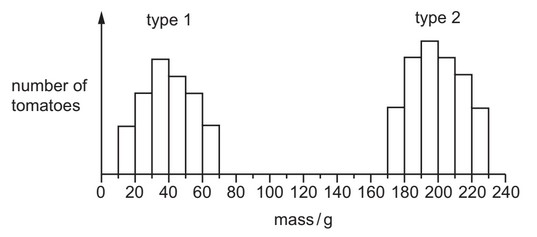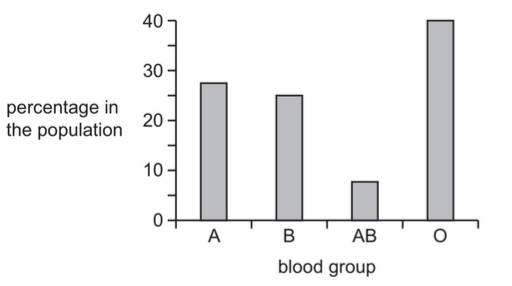Question
In areas of the world where malaria is present, the sickle-cell allele is more common.
What is the reason for this?
A Both diseases are caused by the same allele.
B Heterozygous individuals with the sickle-cell allele are less likely to have malaria.
C Heterozygous individuals with the sickle-cell allele are more likely to have malaria.
D These are parts of the world with many diseases.
Answer/Explanation
Ans
B
Question
The graph shows the masses of two different types of tomato.
What can be concluded from the graph?
A Genes do not affect the mass of tomatoes.
B Type 1 tomatoes show continuous variation.
C Type 2 tomatoes are sometimes smaller than type 1 tomatoes.
D Type 2 tomatoes show discontinuous variation.
Answer/Explanation
Ans: B
Question
Which statement about variation is correct?
A Continuous variation results in few phenotypes with no intermediates.
B Discontinuous variation results in few phenotypes with no intermediates.
C Phenotypic variation is caused by environmental factors only.
D Phenotypic variation is caused by genetic factors only.
Answer/Explanation
Ans
B
Question
The graph shows the percentage of different blood groups in a human population.
Which type of variation is shown by human blood groups?
A continuous variation caused by genetic and environmental factors
B continuous variation caused by genetic factors only
C discontinuous variation caused by genetic and environmental factors
D discontinuous variation caused by genetic factors only
Answer/Explanation
Ans: D
